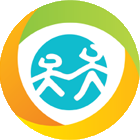CWDS Glossary
The CWDS Glossary includes a List of Acronyms and defined terms captured from various models, reports, and other artifacts pertaining to the Child Welfare System – California Automated Response and Engagement System (CWS-CARES) Project. The Glossary standardizes terms used across the various project disciplines; each term is defined with its meaning specific to the project domain.
The State may update the CWDS Glossary at any time. Any questions please contact CWDS Communications.
A B C D E F G H I J K L M N O P Q R S T U V W X Y Z
Status-at-a Glance
An automated collaboration tool, that captures and generate Org readiness status in a roadmap view.
Strangler Pattern
An application development approach to the replacement of Legacy Systems in which a new application is created around the old application thereby reducing the cost and risk over an approach of a complete rewrite of the system. Slowly, over time, the new application will do more and more of the work and eventually strangle the old legacy application.
Structured Decision Making (SDM)
Evidenced-based tools developed by the Children's Research Center that provide critical decision-making support for social work practice which involves data collection strategies that support safety and risk assessment.
Supervised Independent Living Placement (SILP)
A foster care placement type supervised by the county social worker or probation officer for an NMD who is living independently.
Supervised Independent Living Placement Readiness Assessment
An assessment to determine a Non-Minor Dependent’s (NMD) level of preparation to function effectively within highly independent living experiences while receiving financial support and being supervised by the county social worker or probation officer.
Supportive Transition(s)
A service component which may consist of training, services or other programs designed to assist current and former foster youth achieve self-sufficiency prior to and after leaving the foster care system. Youth and Non-Minor Dependents benefit from these services from ages 14th birthday up to the day before their 24th birthday.
In California, each county has the flexibility to design services to meet a wide range of individual needs and circumstances for present and former foster youth, and to coordinate services with other Federal and State agencies engaged in similar activities.
Support Portal
A portal or website where internal or external users can access support information (e.g., FAQs, knowledge documents, user manuals, Training Guides, etc.) and perform self-help tasks (e.g., login and password reset, submit service desk request/ticket, etc.).
Suspected Child Abuse Report (SCAR)
A California Department of Justice standard form for Mandated Reporters reporting child abuse.
System Availability
The result of the available time divided by the scheduled time reflects the percentage of the scheduled time the system was available for use.
System Integrator (SI)
A person or company that specializes in bringing together component subsystems into a whole and ensuring that those subsystems function together, a practice known as system integration. They also solve problems of automation.
